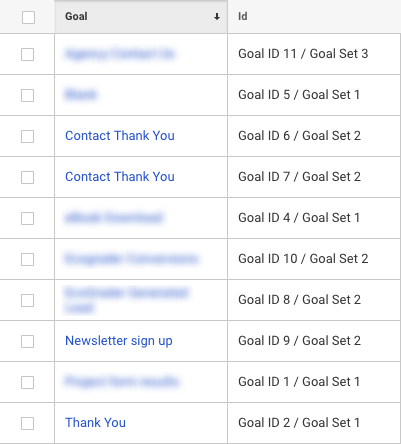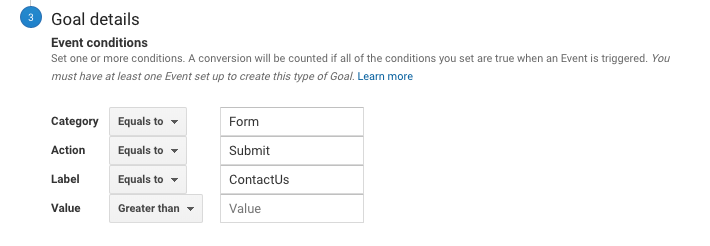What Data Is Google Analytics Goals Unable to Track: A Complete Guide
What Data Is Google Analytics Goals Unable to Track: A Complete Guide
Blog Article
Debunking Google Analytics Limitations: Discover What Data Goals Can not Track
In the realm of electronic analytics, Google Analytics stands as a powerful device that provides beneficial insights right into internet site performance and user behavior. From the details of user communication with dynamic web content to the complexities of cross-device individual journeys, these constraints lost light on areas that may continue to be obscured from conventional analytics viewpoints.

Customer Interaction With Dynamic Web Content
User communication with vibrant content plays a crucial function in recognizing individual actions on sites and optimizing the total user experience. Dynamic web content refers to components on a web page that can transform without the need for a complete web page reload. This includes interactive components such as pop-ups, sliders, forms, and video clips that respond to customer actions in real-time. By tracking customer interactions with vibrant web content, site owners can get important understandings into user involvement, choices, and habits.
Google Analytics supplies numerous devices to track individual interactions with dynamic content, such as occasion tracking and online pageviews. Occasion tracking enables you to keep track of particular customer actions, like clicking a switch or viewing a video clip, supplying information on how individuals communicate with vibrant elements. Digital pageviews can be utilized to track interactions that do not lead to a brand-new page load, giving an extensive view of customer interaction with dynamic content. By analyzing this information, web site owners can make informed decisions to improve customer experience and drive conversions.
Cross-Device Customer Journeys
Exactly how can modern analytics tools track the facility courses individuals take across multiple tools in their on the internet journeys? Cross-device user journeys offer a significant difficulty for tracking and analyzing user actions properly. As users communicate with apps or sites utilizing various tools such as desktops, tablet computers, and smartphones, it comes to be essential to understand exactly how they move between these platforms to optimize individual experience properly.
Google Analytics encounters limitations in tracking cross-device user journeys as a result of personal privacy problems and technological restraints - what data is google analytics goals unable to track. While it can give understandings right into specific gadgets' communications, tracking a seamless user journey across multiple devices remains a difficulty. This limitation can lead to incomplete data and fragmented customer understandings, making it hard for businesses to create a unified sight of the client trip
To resolve this concern, businesses can utilize sophisticated analytics devices that offer cross-device monitoring capabilities, enabling them to obtain an extra alternative understanding of individual actions. By leveraging these tools, companies can bridge the space in tracking cross-device user journeys and enhance their electronic techniques for a smooth customer experience.
Offline Conversions and Acknowledgment
As organizations navigate the difficulties of tracking cross-device individual journeys, one more critical element to take into consideration is the world of offline conversions and acknowledgment in the world of data analytics. While Google Analytics offers valuable understandings right into online individual habits, it falls short when it concerns tracking conversions that take place offline. This limitation postures a substantial challenge for organizations that have both online and offline sales channels.
Offline conversions, such as acquisitions made in physical stores or with telephone call centers, are important to recognizing the complete client trip. Without the ability to associate these offline conversions to specific on-line communications, companies might struggle to precisely gauge the effect of their electronic advertising efforts.
To resolve this gap, organizations can check out different services such as incorporating CRM systems with on the internet analytics tools or making use of unique coupon codes that can be mapped back to online projects. By bridging the gap in between online and offline data, organizations can acquire an extra comprehensive understanding of their customers' Discover More Here habits and enhance their total marketing techniques.
Person Customer Recognition
In the realm of information analytics, the capacity to accurately determine private customers across various online touchpoints is an essential challenge for organizations looking for to individualize and enhance their advertising and marketing techniques. While Google Analytics gives valuable insights right into customer behavior and communications, it drops short in enabling the identification of certain people due to personal privacy problems and technical limitations. Google Analytics uses one-of-a-kind identifiers such as cookies to track customer sessions and habits, yet these do not equate to identifying private users in a personal sense.

Information From Secure Pages
Despite the increasing prevalence of protected web pages on internet sites, acquiring data from these encrypted sources offers a special difficulty for digital analytics platforms like Google Analytics. Protect pages, suggested by HTTPS in the URL, secure data exchanged between the customer's web this content browser and the website's web server to make sure privacy and safety and security. While this encryption is essential for securing sensitive details, it likewise poses constraints for tracking customer actions and gathering analytics information.
Google Analytics encounters obstacles in accumulating comprehensive details from safe and secure pages as a result of the encryption methods in place. Consequently, particular data points such as recommendation resources, keyword searches, and also some customer communications may not be fully captured when users access a website with a secure link. This limitation can affect the accuracy and completeness of the information evaluation, resulting in voids in recognizing user behavior and preferences on secure pages.
To navigate this challenge, digital analysts might require to discover alternative tracking methods or leverage other tools specifically developed to collect insights from safe web pages. By adjusting approaches to accommodate these limitations, organizations can still derive beneficial analytics in spite of the restraints offered by encrypted links.
Conclusion
In final thought, Google Analytics has restrictions in tracking user interaction with vibrant web content, cross-device individual trips, offline conversions, private customer identification, and information straight from the source from protected web pages. Despite its beneficial insights, Google Analytics might not offer a full photo of customer engagement throughout various touchpoints.
Customer interaction with dynamic web content plays a critical function in understanding customer behavior on web sites and maximizing the general customer experience. By tracking user interactions with vibrant material, website proprietors can acquire valuable insights right into individual involvement, preferences, and actions.
Google Analytics uses special identifiers such as cookies to track customer sessions and actions, yet these do not relate to identifying specific customers in an individual sense.
As a result, specific data points such as recommendation resources, keyword searches, and also some user interactions may not be totally recorded when users access a site via a secure connection.In final thought, Google Analytics has constraints in tracking customer interaction with dynamic material, cross-device individual journeys, offline conversions, private user identification, and data from protected web pages.
Report this page